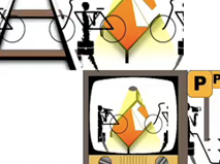
The Generative Visual Renku project presents a new form of concrete polymorphic poetry inspired by Japanese renku poetry, iconicity of Chinese character forms, and generative models from contemporary art. Calligraphic iconic illustrations are composed by the system with both visual and conceptual constrains in response to user actions into a fanciful topography articulating the nuanced interplay between organic (natural or hand-created) and modular (mass-produced or consumerist) artifacts that saturate our lives.
Since the industrial age, modularity has revolutionized our everyday lives. For the sake of efficiency and optimization, things and activities were shaped into mass-produced interchangeable units, including our furniture, our dwelling places, our commuting, our consumptions, our entertainments, and our identities. In consumerist societies, modularity always lies at the center, whereas the complements are just scattered peripheries. Life is a journey back and forth between clustered majorities and isolated minorities.
Download video: MP4 format | WebM format
"Coding Landscapes, Crossing Metaphors"
Demo summary: This video displays sample sessions of interacting with the system. All images are annotated with semantic metadata, which are exploited in selecting subsequent images based on user mouse-clicks. Iconic linking refers to the system’s selection of subsequent images that match based upon shared visual features such as shape, size, etc. Iconic shifting refers to selecting images with differing visual features. Conceptual linking and shifting refer to the system’s selection of subsequent images that match based upon shared or differing logical/conceptual/metaphorical features such as being organic, transportation-oriented, entertainment-oriented, modular, etc. The system can match images based upon integrated measures of iconic, conceptual, and structural/diagrammatic similarity and difference.
The walking character transforms based upon artifact usage and role in each particular conceptual context.